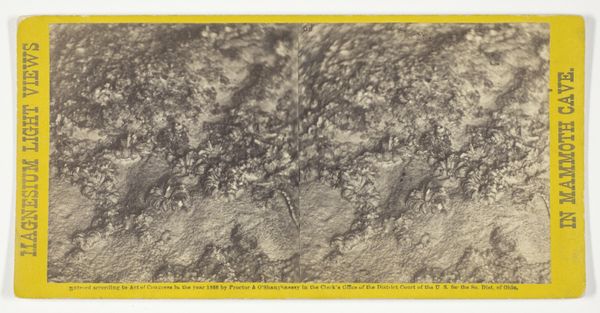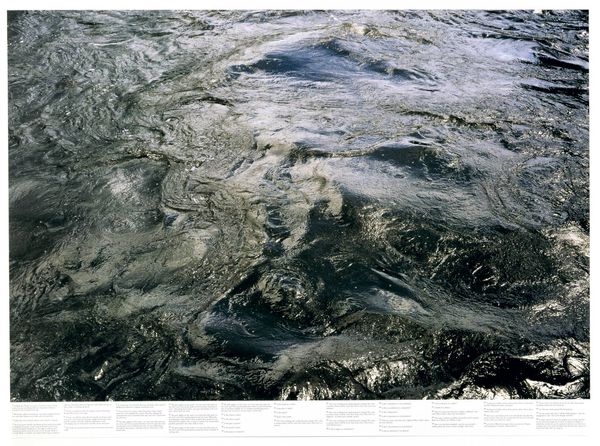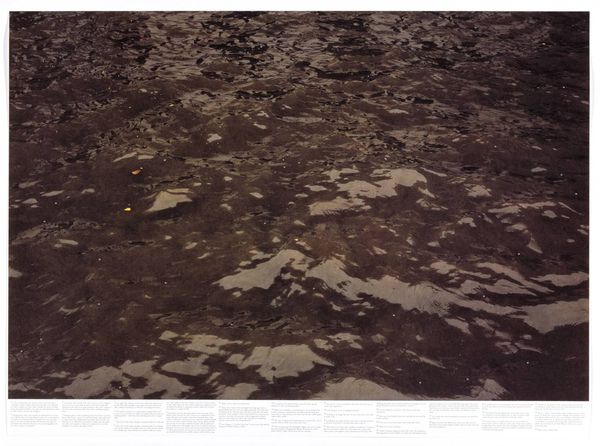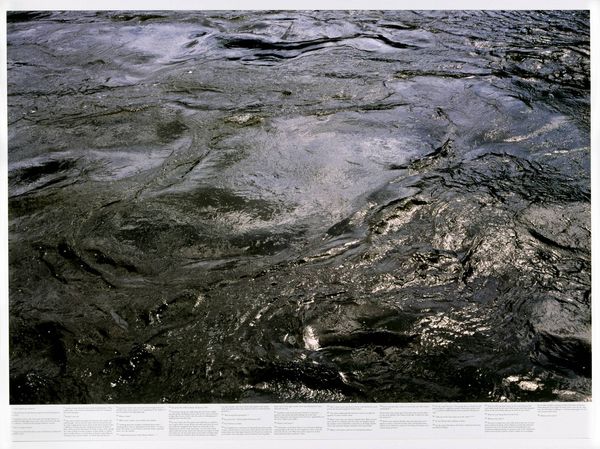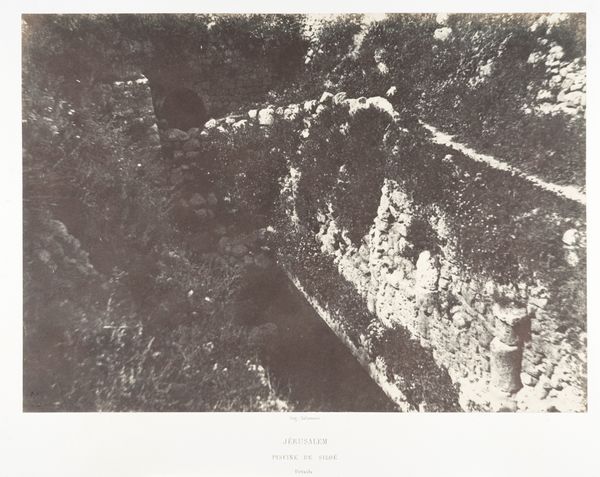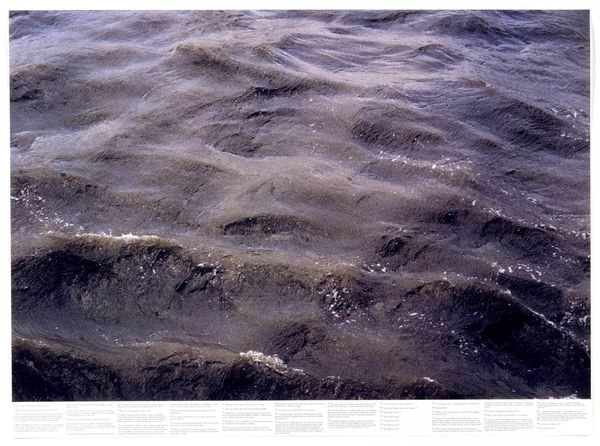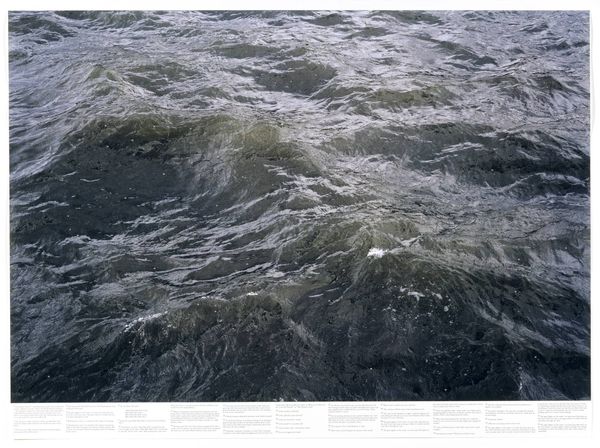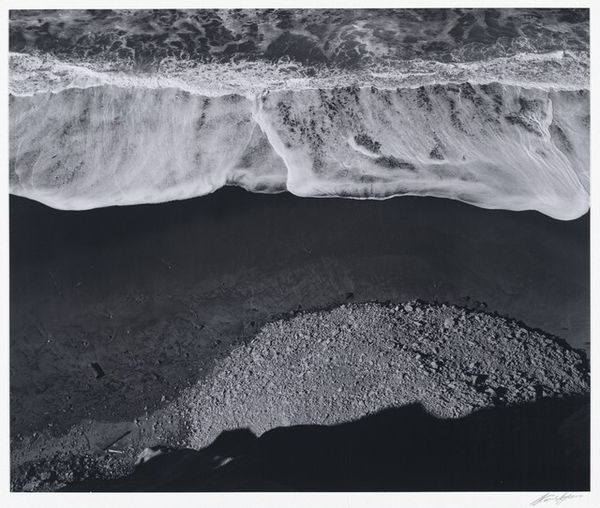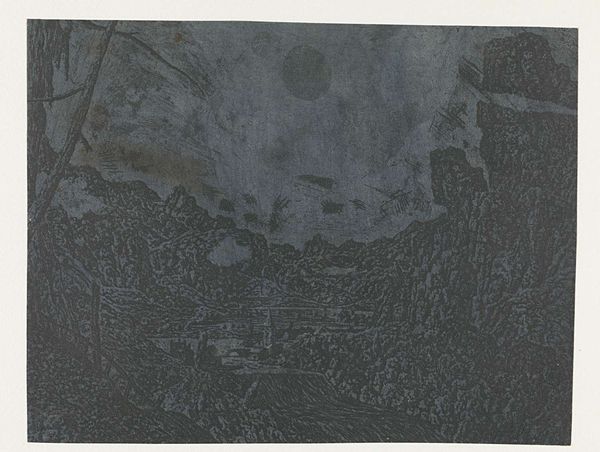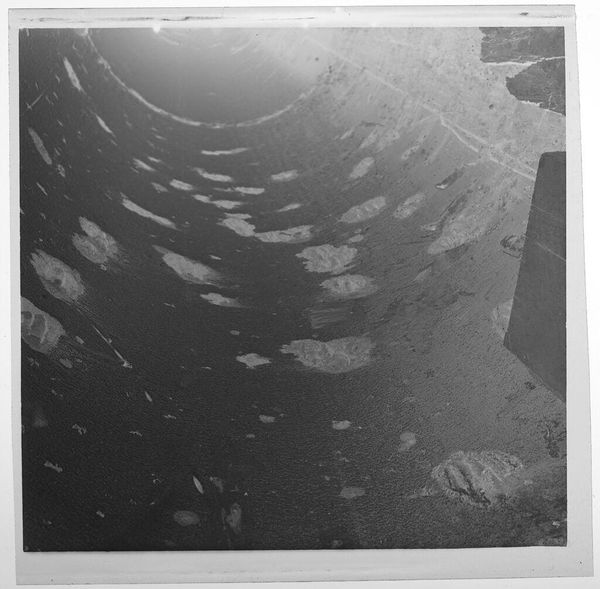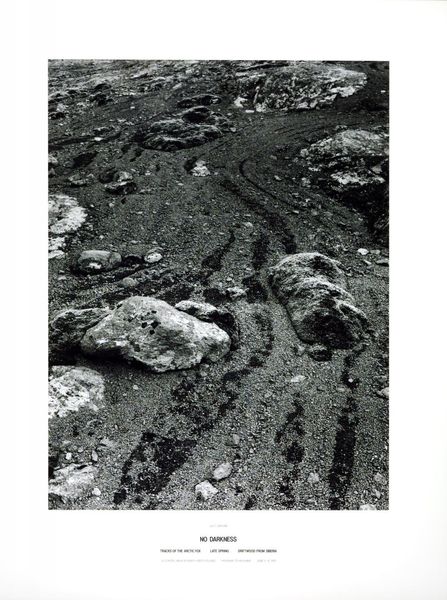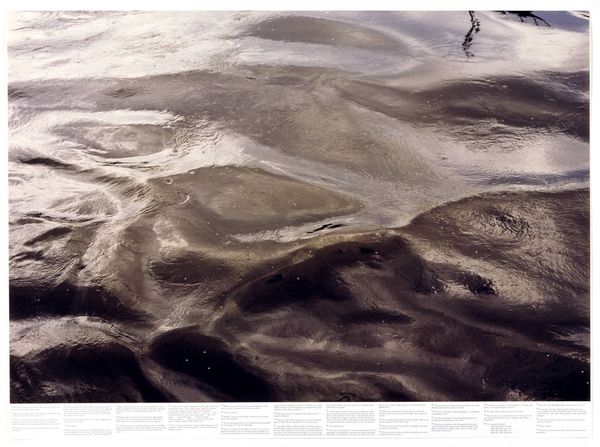![[no title] by Roni Horn](/_next/image?url=https%3A%2F%2Fd2w8kbdekdi1gv.cloudfront.net%2FeyJidWNrZXQiOiAiYXJ0ZXJhLWltYWdlcy1idWNrZXQiLCAia2V5IjogImFydHdvcmtzLzExNGI4ZDI2LTQ1YTMtNDdmNS05YzNkLWQ5N2FhZTgyY2Q2Yi8xMTRiOGQyNi00NWEzLTQ3ZjUtOWMzZC1kOTdhYWU4MmNkNmJfZnVsbC5qcGciLCAiZWRpdHMiOiB7InJlc2l6ZSI6IHsid2lkdGgiOiAxOTIwLCAiaGVpZ2h0IjogMTkyMCwgImZpdCI6ICJpbnNpZGUifX19&w=3840&q=75)
Dimensions: image: 770 x 1055 mm frame: 840 x 1120 x 50 mm
Copyright: © Roni Horn, courtesy Hauser & Wirth, London | CC-BY-NC-ND 4.0 DEED, Photo: Tate
Curator: We're looking at an untitled work by Roni Horn, part of the Tate collection. It's a photograph, dominated by the surface of water. Editor: It's immediately striking how tactile it feels, despite being a photograph. I can almost feel the movement and chill of the water. Curator: The composition certainly draws you in. Horn masterfully uses light and shadow to create a complex, almost abstract pattern. The subtle gradations… Editor: And yet, what's remarkable is how seemingly simple the whole process is. The capture of light on water, repeated actions, speaks to the labor involved and the accessibility of the subject. Curator: Perhaps. But its effectiveness lies in the sophisticated interplay of formal elements, the repetition and variation creating a visual rhythm. Editor: I'm more drawn to the physical reality, the materials used, and the act of capturing something so elemental. Curator: It's true that the water itself holds inherent interest, but the artwork refines that, heightening our perception. Editor: I appreciate the visual rhythm that comes from that engagement with the immediate environment. Curator: I find myself appreciating the complexity of such visual simplicity. Editor: And I am thinking about the labor and process of artmaking.
Comments
Join the conversation
Join millions of artists and users on Artera today and experience the ultimate creative platform.
tate 8 months ago
⋮
Still Water (The River Thames, for Example) is a series of fifteen large photo-lithographs of water, printed on white paper. Each of the images focuses on a small area of the surface of the river Thames. The colour and texture of these watery surfaces varies dramatically between images: colours range from black to blue and from dark green to khaki-yellow, and in each case the water’s texture is differently augmented by tidal movement and the play of light. Close inspection of the images reveals that tiny numbers in typeface are dotted like specks of flotsam over the water’s surface. These numbers refer to footnotes printed along the lower edge of each image’s white border. The footnotes present a series of musings and quotations on the significance of the river and the moods and narratives it evokes. Tate’s Still Water (The River Thames, for Example) is from an edition of seven.
